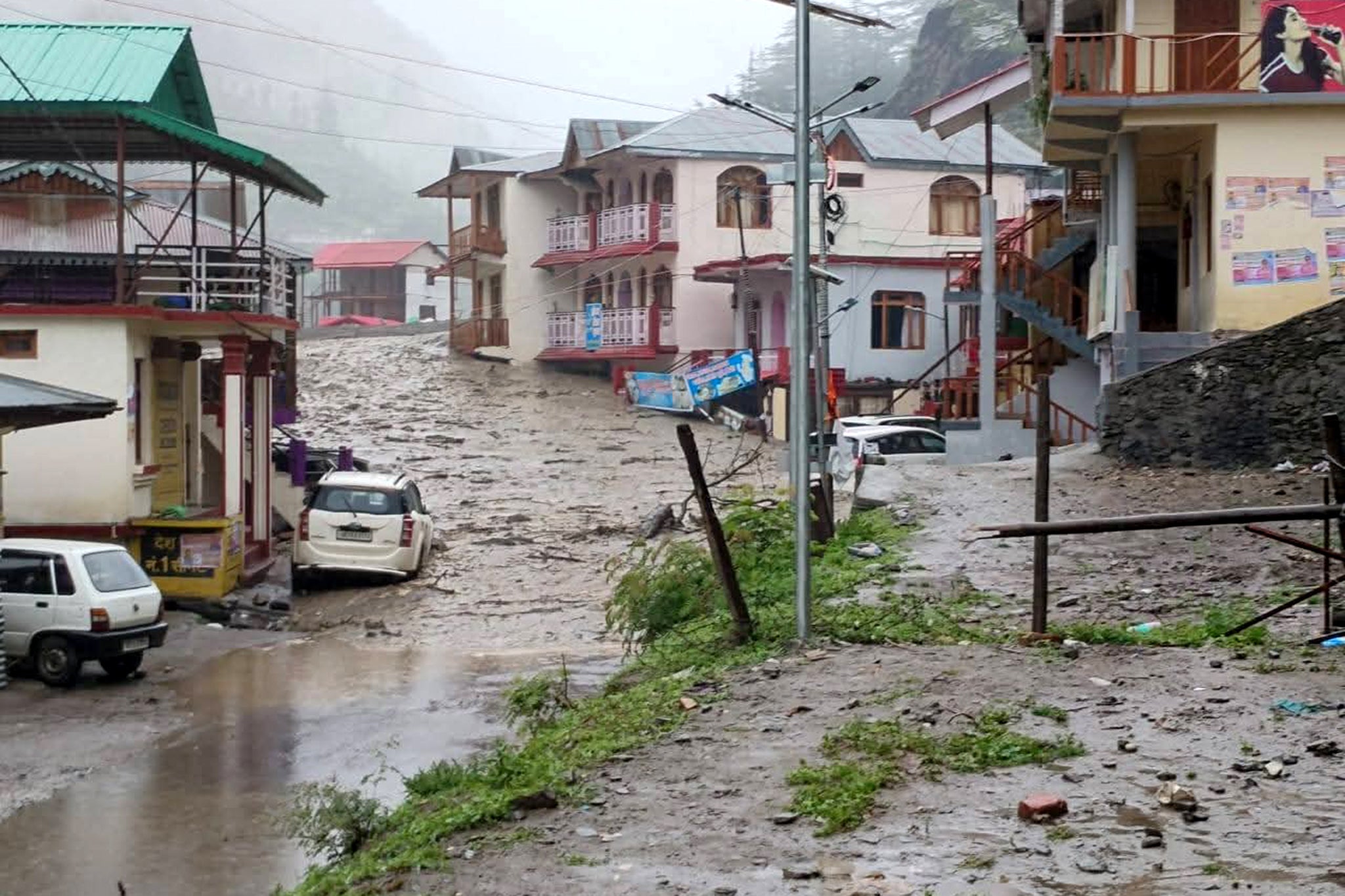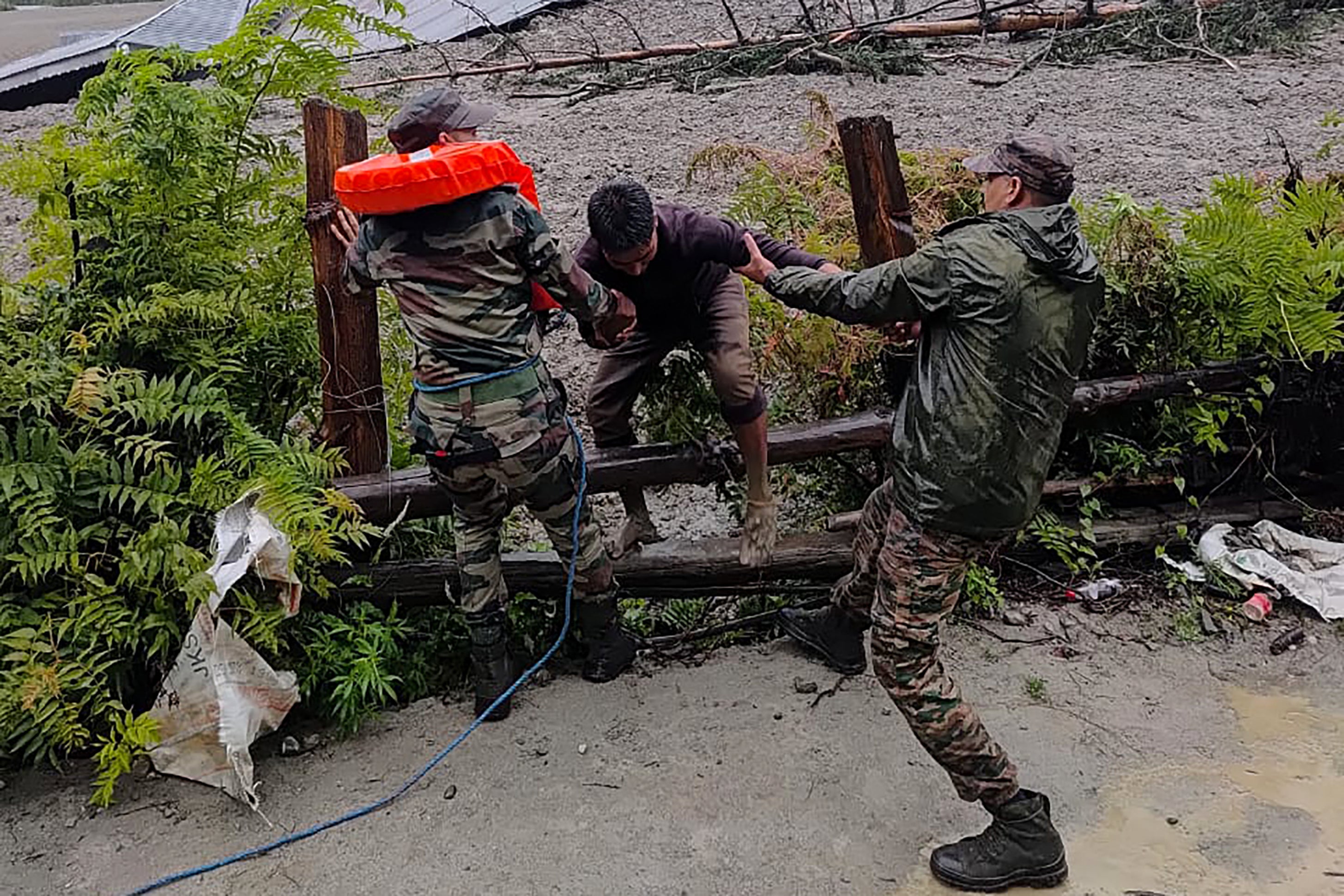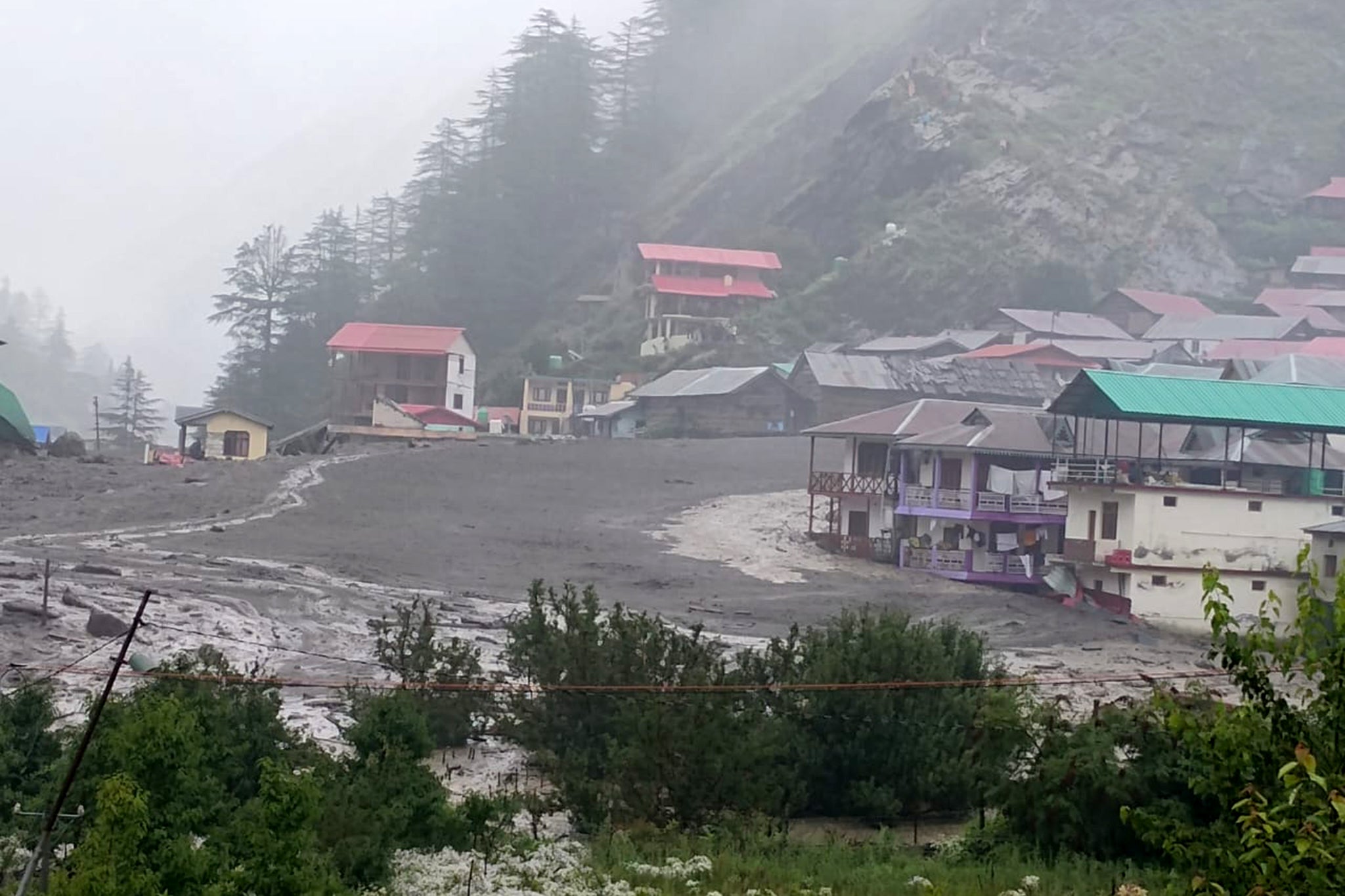At least four people died and several are trapped under debris after a flash flood washed away a village in the northern Indian state of Uttarakhand on Tuesday.
Rescuers are looking for those feared trapped and missing from the extreme climate event in the Himalayan state.
Dramatic footage aired by local broadcasters showed floodwaters rushing down a mountainside in Uttarkashi district before crashing into a hamlet in the foothills, tearing through houses and destroying a road.
Videos recorded by tourists showed a violent stream sweeping away several houses and vegetation. “Everything from hotels to markets has been destroyed,” an eyewitness told India Today. “I haven’t witnessed a disaster like this before.”
The Uttarakhand police said rising water levels in the Harshil area of Uttarkashi posed a serious threat, warning residents via social media to stay away from rivers.

According to local officials, the flash flood was triggered by a cloud burst, leading to a massive debris slide in the village of Dharali.
“The village was on a higher elevation, but the area was home to commercial activities such as hotels and shops. We have yet to ascertain the losses, but preliminary reports indicate severe property damage,” district magistrate Prashant Arya said.
“About a dozen hotels have been washed away and several shops have collapsed.” he said, adding that the Indian army and police, were searching for the missing.
Federal minister Sanjay Seth told news agency PTI: “It is a serious situation. PM Modi and Amit Shah are closely monitoring it. This is a natural calamity. We have received information about four deaths and around 100 people missing. We pray for their safety.”

Rescue teams from the State Disaster Response Force, the National Disaster Response Force, and the Indian Army were at the site working to rescue people.
Mr Arya confirmed to the Times of India that at least four people had died in the flash flood.
“We are yet to get a comprehensive assessment. We are rushing to the area,” subdistrict magistrate of Bhatwari, Shalini Negi, said.
The cloudburst also triggered a massive landslide, cutting off connectivity to the popular pilgrimage site of Gangotri.
Prime minister Narendra Modi offered his condolences to the people affected by the incident.
“I pray for the well-being of all the victims… Relief and rescue teams are engaged in every possible effort. No stone is being left unturned in providing assistance to the people,” he wrote.
Uttarakhand chief minister Pushkar Singh Dhami said he was in constant touch with senior officials involved in relief and rescue work.
“The news of heavy destruction caused by the cloudburst in Dharali is extremely saddening. SDRF, NDRF, district administration and other related teams are working on war footing. I pray for everyone’s safety,” he said. “We are doing everything possible to save lives and provide relief.”
India’s National Disaster Management Authority said it had requested three helicopters from the federal government to assist in the rescue and relief operations as rescuers struggled to access the remote terrain.

Sudden intense downpours over small areas known as cloudbursts are increasingly common in Uttarakhand, a Himalayan region prone to flash floods and landslides during the monsoon season.
Cloudbursts have the potential to wreak havoc by causing intense flooding and landslides, affecting thousands of people in the mountainous regions.
More than 6,000 people died and 4,500 villages were affected when a similar cloudburst devastated Uttarakhand state in 2013.
Experts say cloudbursts have increased in recent years partly because of climate change, while damage from the storms also has increased because of unplanned development in mountain regions.
The flooding in northern India is the latest in a series of disasters that have battered the Himalayan mountains, which span across five countries, in the last few months.
Flooding and landslides as a result of heavy rains and glaciers melting thanks to high temperatures have killed more than 300 people in Pakistan, reported the country’s disaster agency.
In 2024 alone, there were 167 disasters in Asia – including storms, floods, heat waves and earthquakes – which was the most of any continent, according to the Emergency Events Database maintained by the University of Louvain, Belgium. These led to losses of over £24 billion, the researchers found.
A 2023 report by Nepal-based International Centre for Integrated Mountain Development found that glaciers are melting at unprecedented rates across the Hindu Kush and Himalayan Mountain ranges.
The study found that at least 200 of the more than 2,000 glacial lakes in the region are at risk of overflowing, which can cause catastrophic damage downstream.
Additional reporting by agencies


